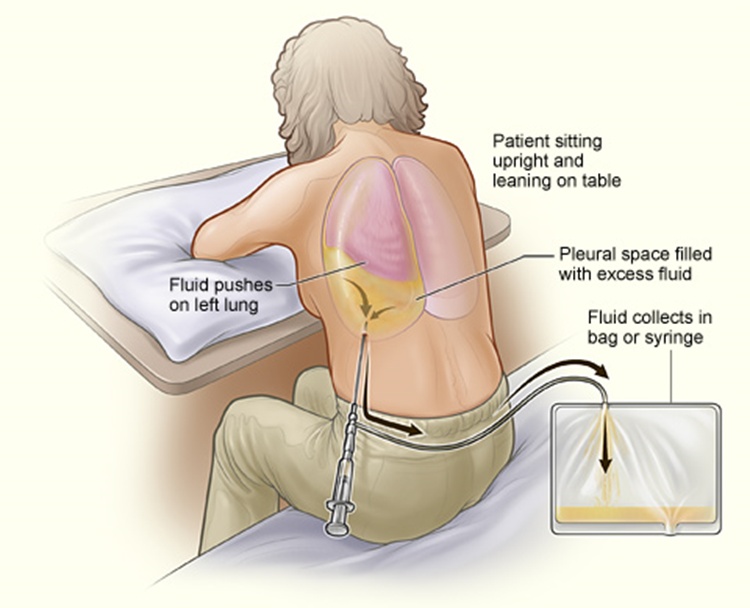A nurse is checking the suction control chamber of a client's chest tube and notes that there is no bubbling in the suction control chamber. Which of the following actions should the nurse take?
Notify the provider.
Verify that the suction regulator is on.
Continue to monitor the client because this is an expected finding.
Milk the chest tube to dislodge any clots in the tubing that may be occluding it.
The Correct Answer is B
A. Notify the provider.
This choice suggests involving the healthcare provider immediately. While notifying the provider might eventually be necessary if the issue persists, it's not the initial action in this scenario. The nurse should first assess and troubleshoot the situation before escalating it to the provider.
B. Verify that the suction regulator is on.
This is the correct choice. When there is no bubbling in the suction control chamber of a chest tube, it may indicate that suction is not being applied properly. Verifying that the suction regulator is turned on and set to the correct level ensures that suction is being delivered to the chest tube.
C. Continue to monitor the client because this is an expected finding.
This choice is incorrect. The absence of bubbling in the suction control chamber is not an expected finding and suggests a potential problem with the suction system. Ignoring this finding without taking any action could lead to complications for the client.
D. Milk the chest tube to dislodge any clots in the tubing that may be occluding it.
Milking the chest tube is a technique used to maintain patency and promote drainage in chest tubes, but it should not be the first action when there is no bubbling in the suction control chamber. This action does not address the underlying issue of inadequate suction and may not be appropriate without first ensuring that suction is functioning correctly.
Nursing Test Bank
Naxlex Comprehensive Predictor Exams
Related Questions
Correct Answer is B
Explanation
A. Prone with arms raised over the head.
This position involves lying face down with the arms raised over the head. It is not appropriate for thoracentesis because it does not provide easy access to the thoracic cavity, and it may compress the chest, making it difficult for the client to breathe comfortably during the procedure.
B. Sitting, leaning forward over the bedside table.
This is the correct choice. For thoracentesis, the client should be positioned sitting upright and leaning forward over the bedside table or supported by pillows. This position allows better access to the thoracic cavity and facilitates the removal of pleural fluid. Leaning forward also helps to open up the intercostal spaces, making it easier for the healthcare provider to insert the needle into the appropriate space between the ribs.
C. High Fowler's position.
The High Fowler's position involves the client sitting upright with the head of the bed elevated at a 90-degree angle. While this position may be used for other respiratory procedures or for comfort, it is not the optimal position for thoracentesis. It does not provide the same degree of access to the thoracic cavity as the sitting position with forward leaning.
D. Side-lying with knees drawn up to the chest.
This position involves lying on one side with the knees drawn up to the chest. It is not appropriate for thoracentesis because it does not provide access to the thoracic cavity, and it may obstruct the procedure. Additionally, this position may not be comfortable for the client during the procedure.

Correct Answer is ["B"]
Explanation
A. 24-year-old woman with allergic rhinitis:
Likely safe to take an alpha-adrenergic decongestant as allergic rhinitis is a common indication for decongestant use in young, healthy individuals.
B. 18-year-old man with cold symptoms:
Likely safe to take an alpha-adrenergic decongestant as it's a common indication for decongestant use in young, healthy individuals.
C. 64-year-old woman with a history of heart disease:
Should avoid alpha-adrenergic decongestants due to the risk of increasing blood pressure and potentially worsening heart conditions.
D. 70-year-old woman with glaucoma:
Should avoid alpha-adrenergic decongestants due to the risk of exacerbating glaucoma by causing pupil dilation and increasing intraocular pressure.
E. 56-year-old man with prostatic hypertrophy:
Should avoid alpha-adrenergic decongestants due to the risk of worsening urinary symptoms caused by prostatic hypertrophy, such as urinary retention.
Whether you are a student looking to ace your exams or a practicing nurse seeking to enhance your expertise , our nursing education contents will empower you with the confidence and competence to make a difference in the lives of patients and become a respected leader in the healthcare field.
Visit Naxlex, invest in your future and unlock endless possibilities with our unparalleled nursing education contents today
Report Wrong Answer on the Current Question
Do you disagree with the answer? If yes, what is your expected answer? Explain.
Kindly be descriptive with the issue you are facing.
